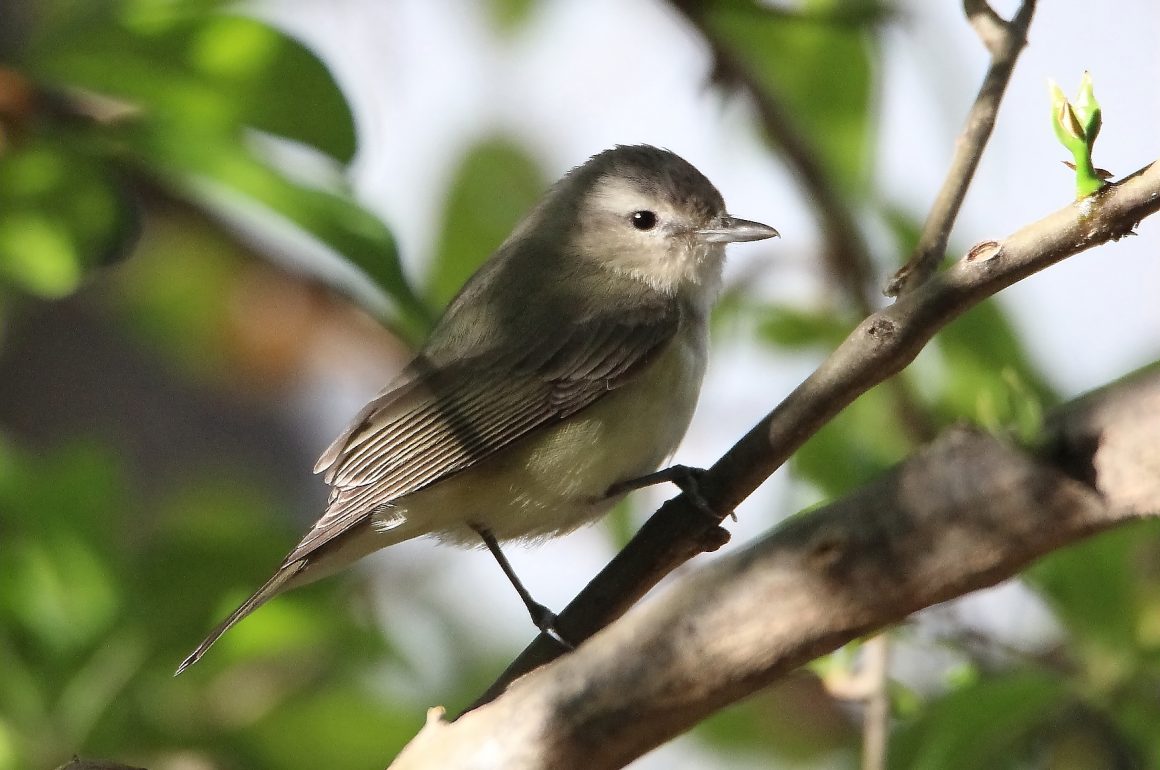
Each year, about this time, I feel the need to take up once again the matter of what our private backyards can do for wildlife conservation. March brings the height of avian activity in my own garden, just before many migratory species leave for the north, but while the depths of our winter dry season here brings lots of birds to my little birdbath.
As a result, there has been plenty of recent activity in my tiny back yard. Morelia is currently five months into our seven-month dry season. So my little birdbath has once again become the center of the local avian social scene. In the past few days, we have hosted Inca Doves, invasive Eurasian Collared Doves and House Sparrows, endemic Rufous-backed Robins, Bronzed Cowbirds and Blue Mockingbirds, native Canyon Towhees, House Finches, and migratory Warbling Vireos, a Summer Tanager, Lincoln’s Sparrows, and Yellow-rumped, Nashville, Orange-crowned, Black-throated Gray, Wilson’s, and Virginia’s Warblers coming for a drink or a dip. Broad-billed, Violet-crowned and Berylline Hummingbirds and a Golden-fronted Woodpecker and Hooded Warbler were active in the trees above the bath, while I have heard a nearby Canyon Wren and Mexican Whippoorwill have been heard, no doubt along with other species that I missed when I wasn’t really attention.
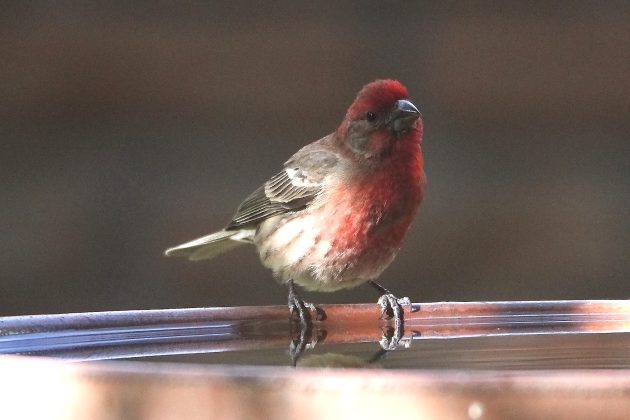
I should clarify that all this activity is occuring in a postage stamp of a garden, only 140 square meters (1,300 square feet) or so in size. In the Mexican fashion, the garden is surrounded by a concrete-and-brick wall, so its mammalian population is limited to squirrels and the occasional mouse or house cat, which can climb the walls. But the bird population benefits from the proximity of a steep natural area only two blocks away. Certain non-urban birds, like the Blue Mockingbird, are willing to cross those two blocks during the dry season to get to the reliable water source that I supply here.
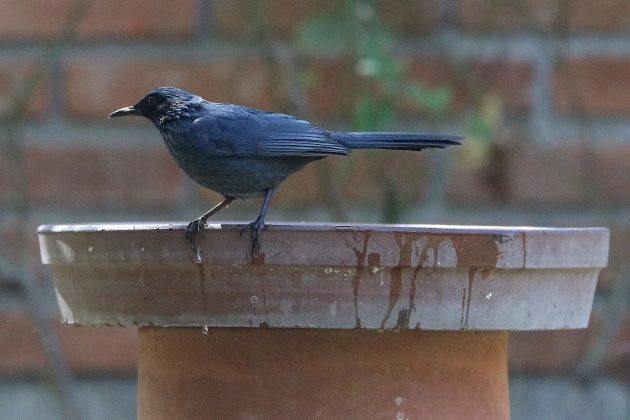
I have written about this garden before, almost always during its spring dry season activity peak. But I thought it might be good to explain some of the reasons why it is as birdy as it is, with 86 species seen here, or from here, over the past 12 years. After all, if enough people do their part to enhance wildlife habit in their own gardens, we could put a real dent in habitat loss worldwide. So here are some of the principles that rule my birdy yard:
My birdy yard is messy. My Italian-American father-in-law, may he rest in peace, surrounded his home with a nicely-manicured lawn, a handful of small trees, some geometrically-pruned foundation shrubs, and a few peonies and roses. In contrast, my garden is a jumble of trees, bushes, flowering plants, fruiting plants, succulents, cactuses, ferns, vines, compost piles, brushpiles, and even a bit of lawn. Truth to be told, my father-in-law hated my messy garden. But the birds love it. Birds do not love neat gardens.
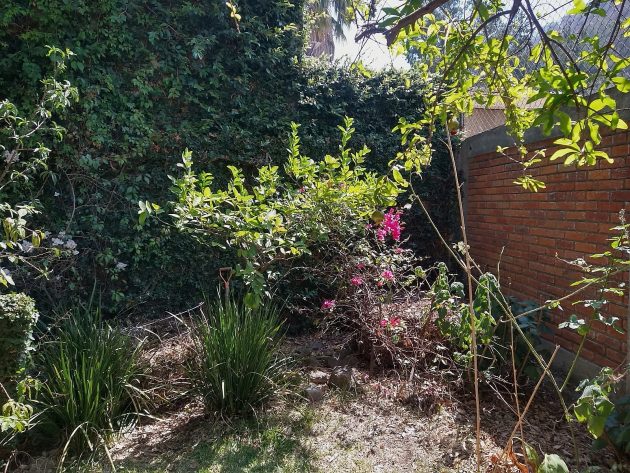
There are two compost piles in this corner. The garden is too small to hide them further from the house.
My birdy yard is wooded. Our 140 square meters are enough for the following trees: 1 Ash, 1 Jacaranda, 1 Orange, 1 Mexican Lime, 1 Pomegranate, 1 native Coral Tree, 2 Climbing Figs, 1 Virginia Creeper, 2 tree-sized “houseplants” which I planted outside, and small Bamboo and Banana groves.

A view of the house’s front: plants everywhere! Our roof cactus is at the upper left. Much of the remaining greenery within view, except for the flowering Bouganvillea, comes from those “houseplants”.
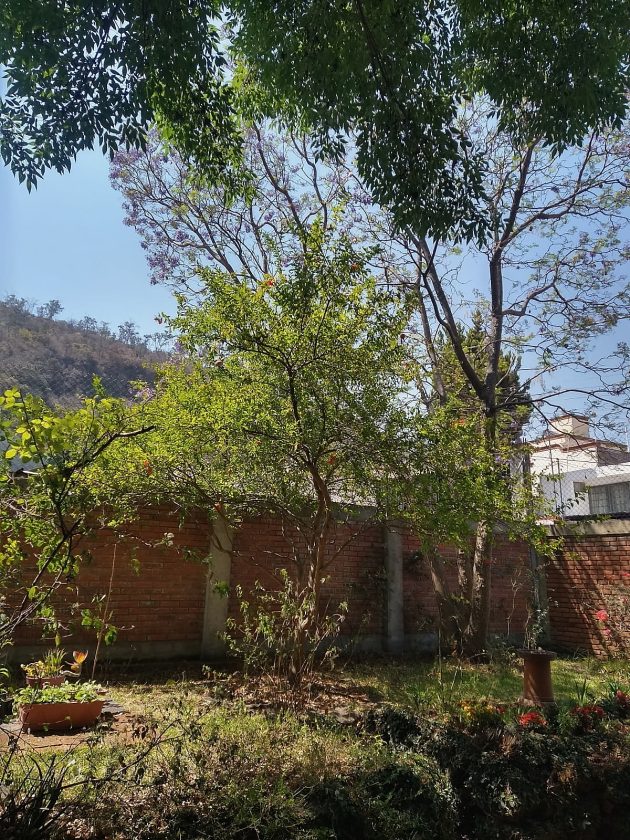
The back yard has the largest trees. The volunteer Ash is now four stories tall.
My birdy yard has a reliable water source. In my fantasy life, I have a lovely large backyard with a pond that I myself installed. But in my real life, I only offer a two-foot wide waterproof clay pot saucer, with an inverted clay tile in the water to provide a shallower platform for the smaller birds. And yet… I cannot say this strongly enough: The best thing you can do for birds is to provide a water source, any water source, near your home. Even if you live in an apartment building with a balcony, you could probably get some action there with a birdbath.
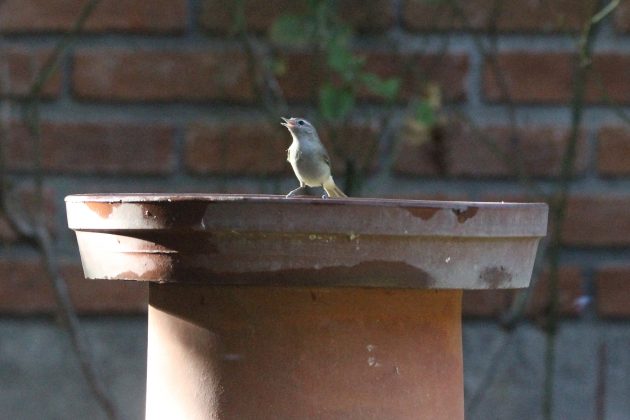
Warbling Vireos are perhaps my most enthusiastic birdbath visitors, although they always act very nervous while there. As shown at the top of this post, they almost always perch in the Pomegranate tree before dipping down to the bath.
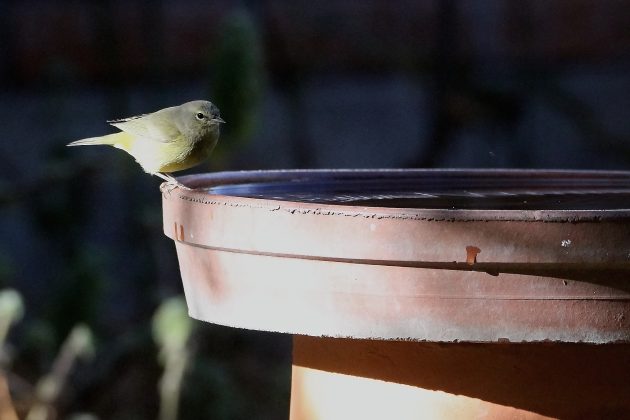
Orange-crowned Warblers are more trusting bathers.
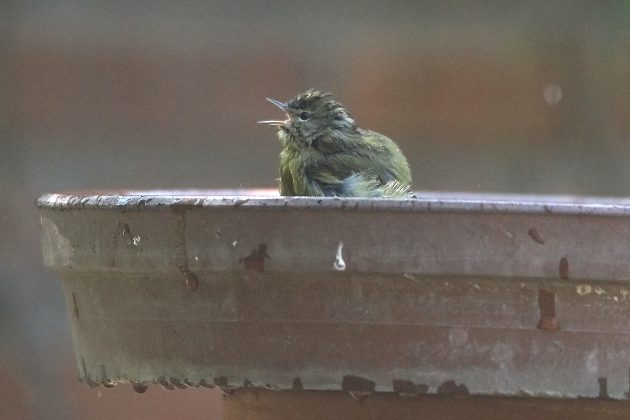
It’s a party, with Nashville Warblers and a Warbling Vireo.
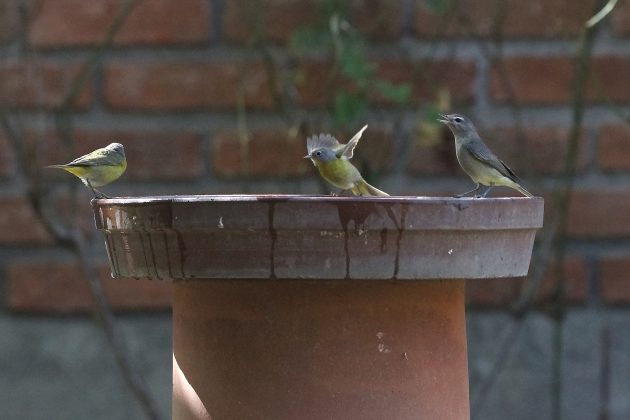
My birdy yard has multiple and varied food sources. I share my Blackberry and Pomegranate harvest with fruit-eating birds. I let them eat all of the fruits from those “houseplants” and the Prickly Pear. Hummingbirds come for Jacaranda, Banana, Pomegranate, and Salvia flours, as well as spiderwebs for their nests. Some of the Salvias and roses have whiteflies on the underside of their leaves, which are favorites of our wintering New World Warblers. The orange tree also seems to be a steady supplier of bugs for the Warblers. Woodpeckers and Bewick’s Wrens like to probe the Jacaranda’s scaly bark for bugs.
My birdy yard is buggy. I never use pesticides on my garden. (The exception is that I do bait the invasive garden snails that seem to take over the world during our rainy season.) The truth is, birds and insect predators keep our bug population down to a very low level. But the insects that do happen are a good thing, not a bad thing.
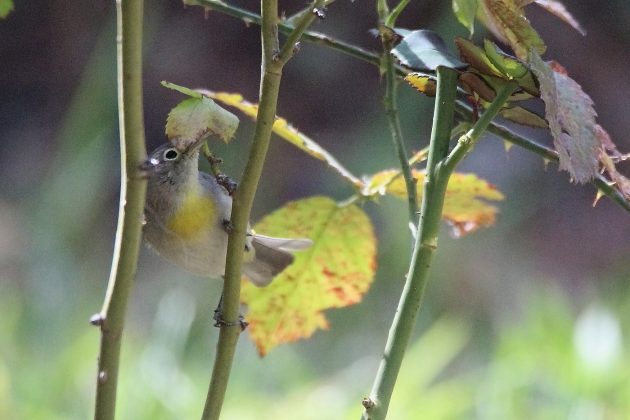
Virginia Warblers, a recent and welcome addition to the garden’s spring population, are enthusiastic gleaners for underleaf bugs. Most of our other warblers do the same.
My birdy yard does not have much lawn. Farther north, a few birds (the American Robin, mostly) like to probe lawns for grubs and earthworms. Here, the lawn provides no food at all for wildlife. I would have no lawn at all, if it weren’t for my wife, who dreams of our grandchildren playing on it. (Note: They don’t.)
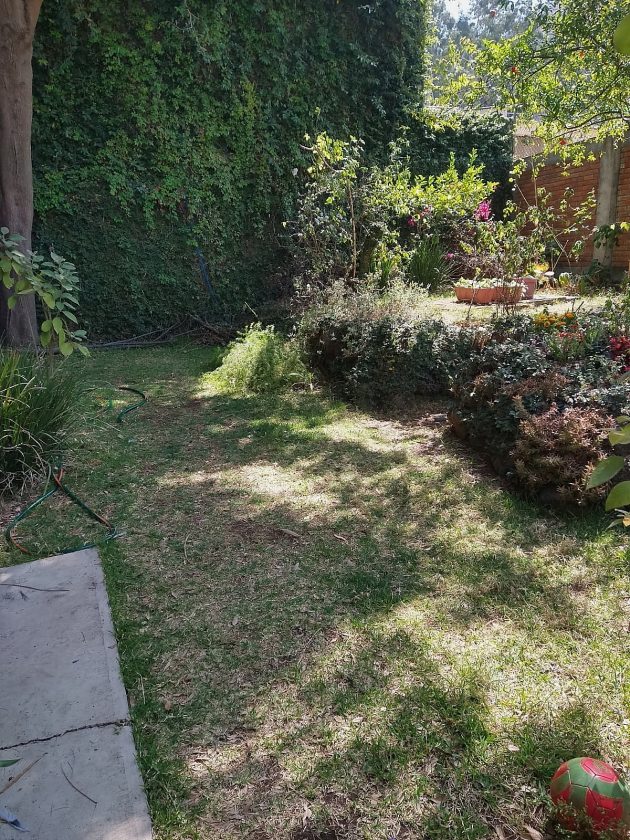
Views of our tiny lawn, suffering a bit from the dry season and competition with tree roots.
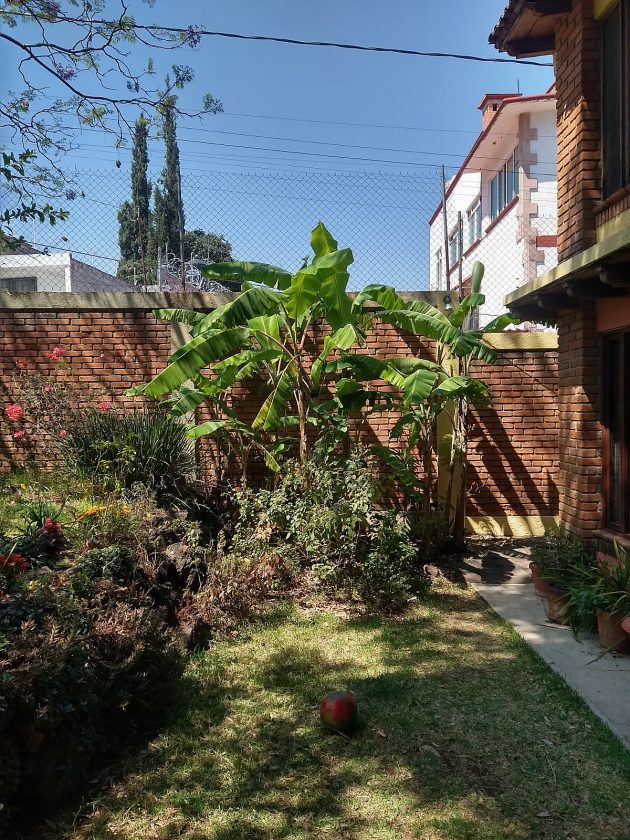
My birdy yard has an increasing number of native plants. I arrived a bit late to the native plant train. If I hadn’t, this yard would look much more like the Michoacán forest. But in recent years, I have enjoyed trying to establish more and more native plants here. Since we have no native-plant nurseries here, that has involved taking cuttings and collecting seeds. A half-dozen native Salvias grow and bloom here, most from cuttings. A wild grape and a Coral Tree were started from seed. A wild sedum that washed off a rock wall by the highway now grows in my garden’s rock wall, among self-planted ferns I moved down from our roof. Weeds that amuse me are allowed to remain, sometimes provoking regret, but mostly pleasure.
My birdy yard is serendipitous. Some twenty years ago, I noticed that an Ash and a Jacaranda had sprouted from seeds I apparently brought in with leaves I had brought in from an outside source. Instead of pulling these up, I decided they were not badly positioned, and let them grow. The Ash is now the tallest tree on our block, and is a stopping place for all sorts of birds. The Jacaranda invites intense activity during its one-month bloom season, with the constant presence of at least three hummingbird species, as well as many other birds. Also many years ago, some bird pooped out a Prickly Pear seed on our roof. The fruits of the resulting cactus now delight our local Golden-fronted Woodpeckers, Blue Mockingbirds, and Curve-billed Thrashers. (Yes, this tall plant is growing on our house’s roof, in the fallen leaves of the same Ash tree I mentioned previously.) And that pair of houseplants that I planted beside our front entryway are now two stories high; their fruits turn out to attract the same birds, plus flocks of lovely Gray Silky-Flycatchers. I did not even know they produced fruit when I planted them!
As I write this, not only is there constant activity at the birdbath, but I can also see an Inca Dove sitting on its nest in the Pomegranate tree. In a world of constant habitat destruction, it is always a comfort to know that each of us can “rewild” our little corner of the earth.
If you are more interested in how your backyard can be so important to the world’s species, I highly recommend this talk on YouTube by Doug Tallamy. It’s also a very fun listen!
All pictures are from the past week, in March of 2025. It’s good to live in a subtropical climate!
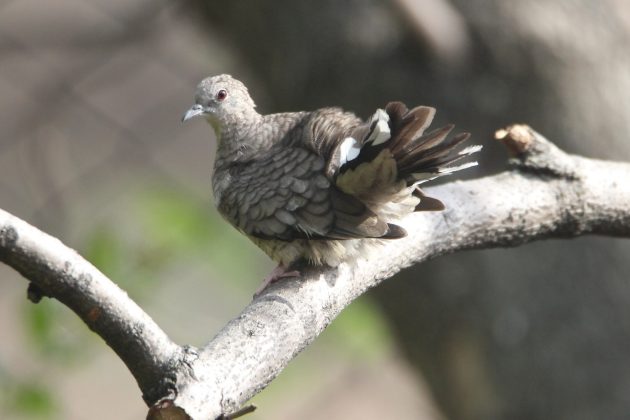

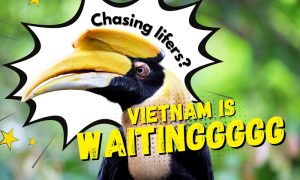
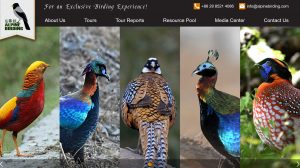
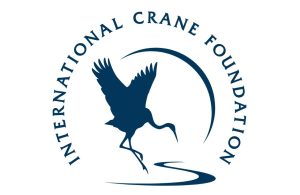
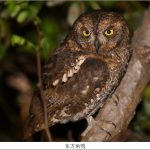
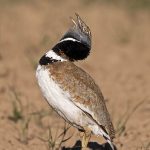
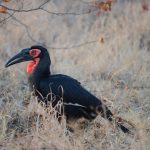
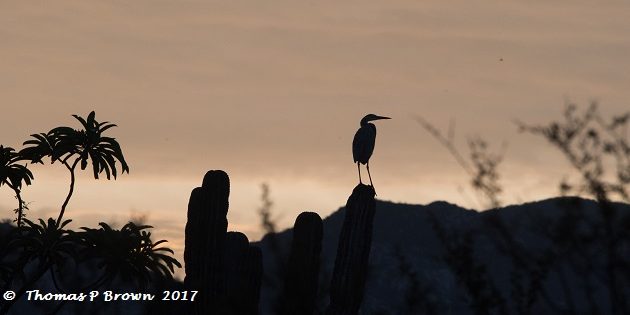
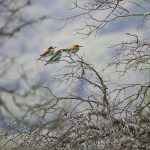
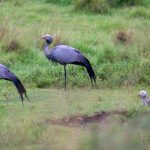
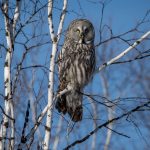
Leave a Comment